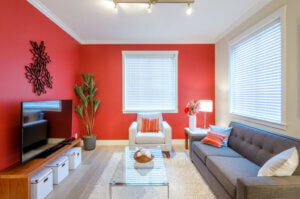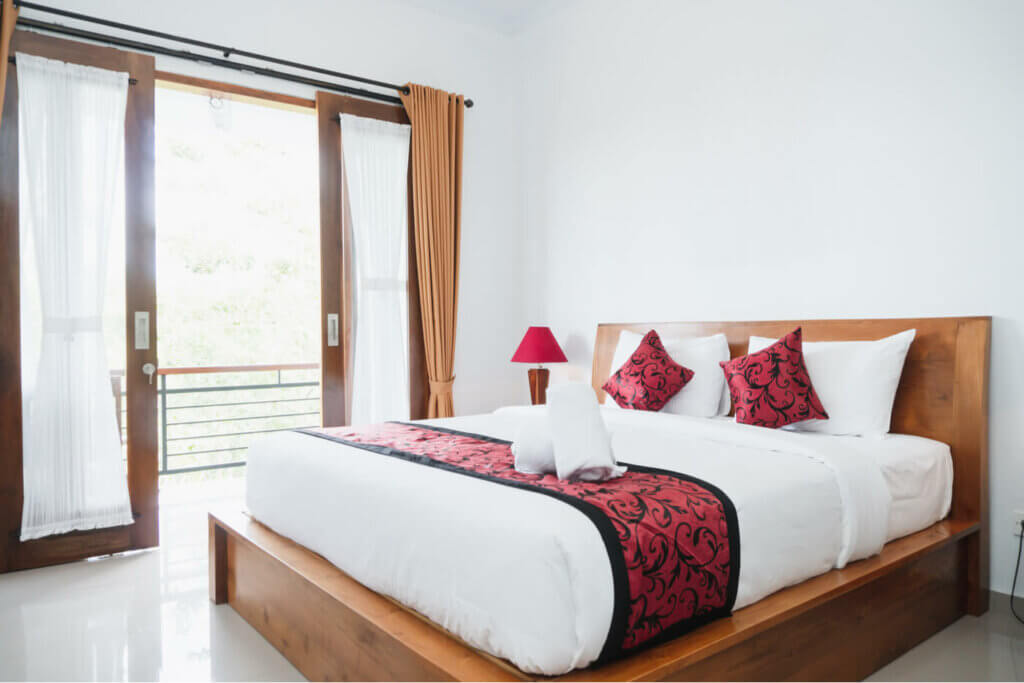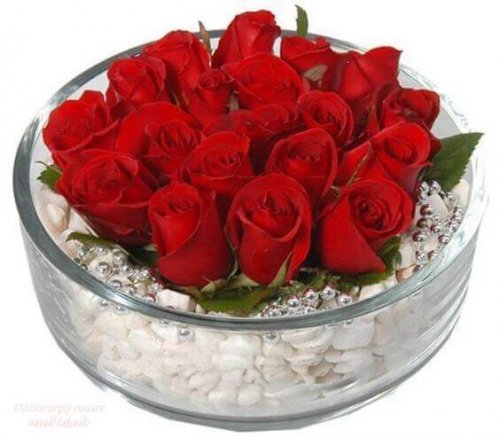Different Uses for the Color Red in Decoration

When working with interiors, it’s important to have goals in mind and think about how you can achieve them. This is why it’s a good idea to understand some of the different uses for the color red in decoration.
This hue is intense and attracts a lot of attention. It catches the eye wherever it’s used, especially on large surfaces. It’s important to know about your options with this color and how to best make use of it.
Indeed, interior design isn’t only governed by shapes and materials. A sense of aesthetic and an intuitive appreciation of spaces can be determining factors in achieving comfort.
Using the color red to decorate spaces meant for relaxing

Red is among the more vibrant tones, those that generate a sensation of passion and are a strong source of motivation. In short, using red is a way to add personality and elegance.
In a space meant for relaxing, such as a living room, bedroom, or den, it should be applied in a simple, basic manner. That is, it should feature in small touches; sofa cushions, a tablecloth, a centerpiece, candles, etc.
It’s not meant to dominate the space, rather be used sparingly. If you paint the walls red or have several pieces of furniture in this color, its presence can be intense. For this reason, it’s not a great idea to go down this path.
Red is somewhere between passion, strength, and decorum.
What effect does it have in the kitchen and bathroom?
If you pay attention to the way the color red is used in decoration, you’ll know it’s one of the new trends in interior design. It’s striking, prominent, and sends out an unmistakable aesthetic message.
- In the kitchen, you’ll find it mainly on furnishings. It’s a way to transmit energy and security. Also, it provides an element of originality, since neutral or white tones are normally used in spaces like this.
- You don’t want to use it too prominently; remember that, aesthetically, red works better on smaller accessories: a stool, bowls, a tablecloth, etc.
- As for bathrooms, the idea is to use red similarly. However, red tiling can be interesting, as long as it’s contrasted with whites or grays. Also, it can go well with the warmth of wood.
- If you don’t want to use it on your bathroom tiles, then consider getting some basic accessories in red, such as glasses, a piece of furniture, or even a toilet seat if you want to be bold.
- As far as floors go, red is never a good idea as it can overwhelm the entire aesthetic.
Touches of red in plants
And now for a completely different way to make use of red than what we’ve talked about so far. It’s time to consider indoor plants with touches of red.

Roses can be a very interesting interior design element. Wherever they are, they project elegance and distinction. For example, on a living room table or in a hall, they make their presence felt and become a dynamic component of the overall aesthetic.
The poinsettia is popular, especially at Christmas time. It’s used as a table decoration for celebrations and can also complement other furnishings well.
Incorporate red in the home
Different uses for the color red in decoration
It’s important to remember that there are many different types of reds. Some are intense and strong, while others are more muted and subdued. And some are in between, such as garnet which doesn’t quite have the characteristic intensity of red because it’s somewhat darker.
Obviously, you should opt for the ideas that best suit your home. How you make use of red will also depend on the prominence you want to give it, taking into account that its strength depends on exactly how it features in interiors. Red can be a great choice for decoration.
When working with interiors, it’s important to have goals in mind and think about how you can achieve them. This is why it’s a good idea to understand some of the different uses for the color red in decoration.
This hue is intense and attracts a lot of attention. It catches the eye wherever it’s used, especially on large surfaces. It’s important to know about your options with this color and how to best make use of it.
Indeed, interior design isn’t only governed by shapes and materials. A sense of aesthetic and an intuitive appreciation of spaces can be determining factors in achieving comfort.
Using the color red to decorate spaces meant for relaxing

Red is among the more vibrant tones, those that generate a sensation of passion and are a strong source of motivation. In short, using red is a way to add personality and elegance.
In a space meant for relaxing, such as a living room, bedroom, or den, it should be applied in a simple, basic manner. That is, it should feature in small touches; sofa cushions, a tablecloth, a centerpiece, candles, etc.
It’s not meant to dominate the space, rather be used sparingly. If you paint the walls red or have several pieces of furniture in this color, its presence can be intense. For this reason, it’s not a great idea to go down this path.
Red is somewhere between passion, strength, and decorum.
What effect does it have in the kitchen and bathroom?
If you pay attention to the way the color red is used in decoration, you’ll know it’s one of the new trends in interior design. It’s striking, prominent, and sends out an unmistakable aesthetic message.
- In the kitchen, you’ll find it mainly on furnishings. It’s a way to transmit energy and security. Also, it provides an element of originality, since neutral or white tones are normally used in spaces like this.
- You don’t want to use it too prominently; remember that, aesthetically, red works better on smaller accessories: a stool, bowls, a tablecloth, etc.
- As for bathrooms, the idea is to use red similarly. However, red tiling can be interesting, as long as it’s contrasted with whites or grays. Also, it can go well with the warmth of wood.
- If you don’t want to use it on your bathroom tiles, then consider getting some basic accessories in red, such as glasses, a piece of furniture, or even a toilet seat if you want to be bold.
- As far as floors go, red is never a good idea as it can overwhelm the entire aesthetic.
Touches of red in plants
And now for a completely different way to make use of red than what we’ve talked about so far. It’s time to consider indoor plants with touches of red.

Roses can be a very interesting interior design element. Wherever they are, they project elegance and distinction. For example, on a living room table or in a hall, they make their presence felt and become a dynamic component of the overall aesthetic.
The poinsettia is popular, especially at Christmas time. It’s used as a table decoration for celebrations and can also complement other furnishings well.
Incorporate red in the home
Different uses for the color red in decoration
It’s important to remember that there are many different types of reds. Some are intense and strong, while others are more muted and subdued. And some are in between, such as garnet which doesn’t quite have the characteristic intensity of red because it’s somewhat darker.
Obviously, you should opt for the ideas that best suit your home. How you make use of red will also depend on the prominence you want to give it, taking into account that its strength depends on exactly how it features in interiors. Red can be a great choice for decoration.
All cited sources were thoroughly reviewed by our team to ensure their quality, reliability, currency, and validity. The bibliography of this article was considered reliable and of academic or scientific accuracy.
- Atkins, Caroline:Colorea tu hogar, Londres, Ceac, 2003.







